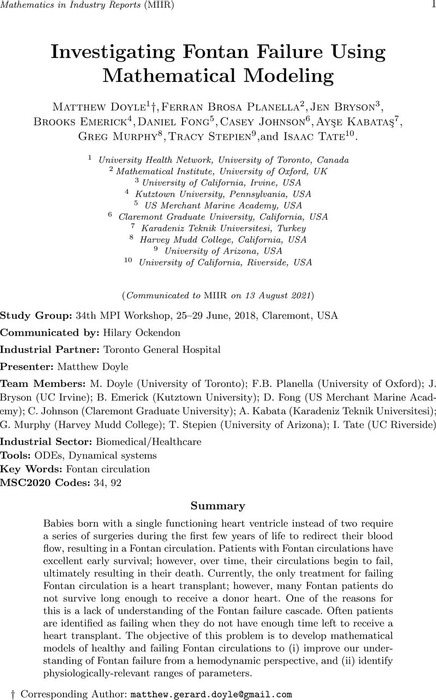Abstract
Babies born with a single functioning heart ventricle instead of two require a series of surgeries during the first few years
of life to redirect their blood flow, resulting in a Fontan circulation. Patients with Fontan circulations have excellent early survival; however, over time, their circulations begin to fail, ultimately resulting in their death. Currently, the only
treatment for failing Fontan circulation is a heart transplant; however, many Fontan patients do not survive long enough to receive a donor heart. One of the reasons for this is a lack of understanding of the Fontan failure cascade. Often patients are identified as failing when they do not have enough time left to receive a heart transplant. The objective of this problem is to develop mathematical models of healthy and failing Fontan circulations to i) improve our understanding of Fontan failure from a hemodynamic perspective, and ii) identify physiologically-relevant ranges of parameters.
Content


